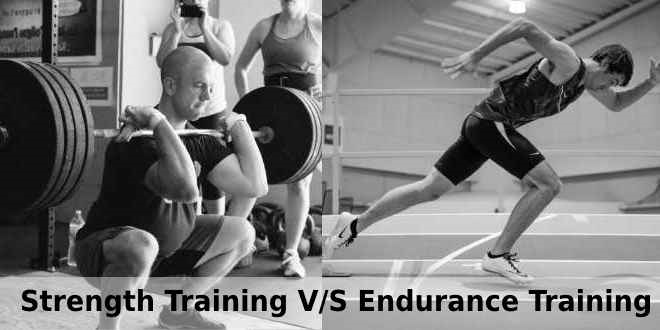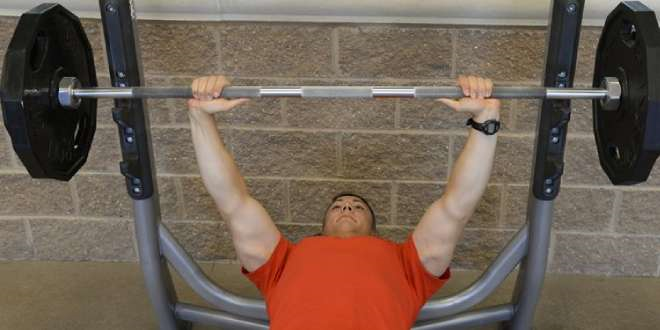Bodybuilding is the most physically taxing sport. Onlookers don’t realize that bodybuilding is a lot more than just lifting weights or taking protein supplements, it’s a sport that requires extreme dedication and a thorough understanding of the complete human anatomy and physiology. It makes complete sense, right? Bodybuilding is nothing but body transformation and how can you transform it without knowing about it, in detail. For example, a sprinter goes to the gym and lifts weight and so does a bodybuilder. But, are they really aiming for the same? Can’t be! A sprinter and a bodybuilder do not have the same goals! The former needs endurance while the later needs strength. Let’s discuss and understand the difference between strength training and endurance training.
Difference between strength and endurance
Is there a difference at all? By all means YES! Strength and endurance are completely different terms and have different applications in practical life and sports. Interestingly, you use both strength and endurance for different activities, every day. The lift has stopped working, you decide to go 6 floors up the stairs. To reach the 6th floor without giving up, you need endurance. Your house is under renovation, you move furniture around the house. To shift those heavy beds and sofas and cabinets, you need strength. When you carry a heavy box up the stairs several floors, you use both strength and endurance. Do you see the clear distinguishing mark? Let’ see another scenario but from professional point of view.
Let’s look at a swimmer. He needs to use his legs, arm and shoulder muscles to glide through the water and he needs to do that continuously for several minutes. A swimmer needs great endurance to be able to pull that off. Similar is the case for a cyclist who pedals kilometers at a stretch. It is not possible without endurance. Now let’s look at a cricketer. He has to hit ball after ball with that swinging motion of the bat. In order to hit that huge six, he will need to pull strength from his leg muscles and arms and pour it out through the bat. He needs to supply all the power in that one move. That is strength into play. Similarly you see athletes competing in long jump or high jump. They need really strong leg muscles to carry themselves over that distance in one jump.
Strength Training
Now, if you have carefully read the examples above for strength, you would see that these activities do not require a prolonged usage of strength. So we want the muscles to be strong but we do not expect them to do a certain activity repeatedly. The athlete needs to gather all his strength for a brief period only. In order to achieve this, athletes train themselves in a very specific way. The most common way is by using weights. Some exercises make you use your own body weight.
Every person lifting weight is not aiming for strength. Even muscle gainers need to lift weights. The weight that you lift and the reps that you do make a difference here.
For strength training, a person is expected to lift weight close to its 1-Rep Max (1RM). It is the maximum weight that you can lift in one repetition. For strength training, an athlete is expected to lift 75 to 80% of his 1RM for 5 to 8 reps as one set. Under any scenario, it is recommended not to go beyond 10 reps as that causes muscle atrophy and you will enter the muscle gain zone. As you move ahead into the strength training, your power increases. Thus, you increase weight and the number of sets, but not the repetitions. For muscle gain, you would go above 12 reps.
Strength Training Exercises
For strength training the emphasis should be on these 4 exercises – Barbell Row, Bench-press, Deadlifts and Squats. These exercise focus on major muscle groups which are required to summon power. Apply weight as per your 1RM to these exercises and do 3 to 5 sets of 5 to 8 reps each. Give your body sufficient rest (2-3 minutes) between sets. Gradually go on increasing the weight and sets.
Endurance Training
Now quickly recall the examples you read above. We talked about cyclist, swimmer and taking the stairs as examples to demonstrate endurance. What does this mean? In each example, the person needs to perform a certain activity repeatedly for longer duration. Hence, we are not looking at strength but the tendency of the muscle to stay in motion without losing performance.
Endurance Training Exercises
For endurance training, the choices are many. Just ensure that your body is in a good form and you go up to 12 reps. Some of the popular endurance exercises are body weight push ups, sit ups, squats and pull ups. You need to be careful here. If you are doing these body weight exercises for endurance, you need to go till 12 reps. If you stop at 4, 6, 8 then it will be strength training. Other exercises are walking lunges, planks holds, box jumps etc.
If you are lifting weight for endurance then try different weights and see which works for you. Settle for a weight that lets you do anything between 12 to 50 reps while giving enough work to your muscles. If you are stopping at <12, then change the weight.
Another important thing is the interval between sets. For endurance, do not take long breaks between sets. Create your own circuit by including the exercises that work the best for you and complete one full circuit one time without taking any break.
This is a brief overview of strength and endurance training. Since the training modules are different, the diet patterns would be different too. So, always take your dietitians or trainer’s advice on this. If you are into strength training, do not work on the same muscle group before 48 hours. Also, in case of any training, ensure that you give your body a good recovery window for the best outcome.
 IBB – Indian Bodybuilding IBB – Home of Indian Bodybuilding and Fitness
IBB – Indian Bodybuilding IBB – Home of Indian Bodybuilding and Fitness







